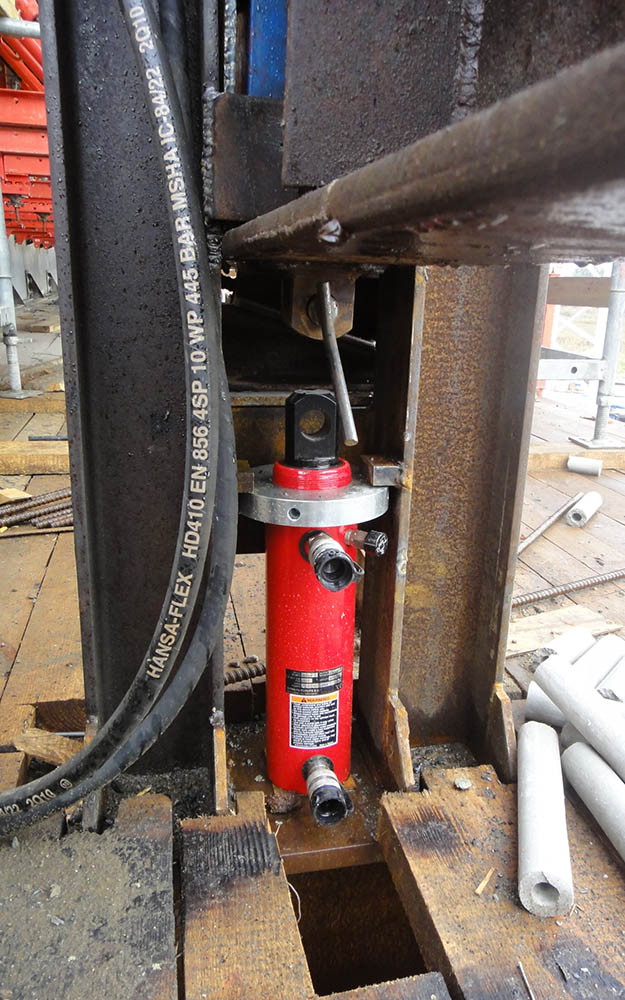About the specialist area of hydraulics
Hydraulics is a key technology in modern engineering and industry. By using fluids under pressure, it enables the transmission and amplification of forces in a precise and efficient manner. From driving heavy machinery to controlling precision mechanical processes, hydraulics has proven itself in countless applications, including automation, mobile hydraulics and manufacturing technology.
Different pressure ranges in hydraulics
1. Low-pressure hydraulics (up to approx. 100 bar)
- Applications: Hydraulic brakes, power steering systems, simple lifting systems.
- Features: Suitable for systems with low force requirements and low loads.
2. Medium-pressure hydraulics (> 100 to approx. 200 bar)
- Applications: Agricultural machinery, smaller industrial systems.
- Features: Frequently used in standard hydraulic systems, sufficient for many industrial tasks.
3. High-pressure hydraulics (> 200 to approx. 700 bar)
- Applications: Mobile hydraulics, machine tools, construction and transport technology.
- Features: Enables high forces with compact components, widely used in industrial and mobile applications.
A particularly demanding specialty is heavy-duty hydraulics as part of high-pressure hydraulics, which is designed for extreme loads and maximum performance. It is used in areas such as mechanical engineering, the construction industry and heavy-duty logistics, where enormous forces must be transmitted safely and reliably. Unlike conventional hydraulic systems, heavy-duty hydraulics work with particularly robust components and often under extreme operating conditions. It works with small volume flows at a pressure of 700 bar. Even very small and compact cylinders can lift loads of more than 5 tons. Cylinders with a lifting capacity of up to 1,000 t are possible in special versions.
High-pressure hydraulics in action: How to move a bridge
In order to carry out repair or renovation work, it is sometimes necessary to temporarily lift bridge sections. Typically, several hydraulic cylinders are used for this purpose, which distribute the load evenly. The cylinders are connected to a central hydraulic unit that supplies the required pressure. Flexible high-pressure hoses feed the hydraulic oil to the cylinders.
The bridge is then lifted in stages, usually just a few millimetres per lift. The pressure in the hydraulic lines is checked and built up in a controlled manner before each new lifting phase.
The high-pressure system ensures that all cylinders work synchronously to guarantee even lifting. Even load distribution is important to prevent the bridge from tilting or deforming. Deviations can lead to dangerous stresses in the structure and damage. The process is continuously monitored using sensors that monitor and automatically compensate for the pressure and stroke of each cylinder.
Once the work has been completed, the bridge is lowered in controlled steps. The hydraulic cylinders are operated in reverse order until the bridge has returned to its original position.
Strict safety precautions are essential when working with heavy loads and high-pressure hydraulics in order to protect people, the loads to be moved and the equipment. Work on hydraulic systems should only be carried out by trained specialist personnel.
In addition, only hydraulic components that are designated and tested for the high-pressure range should be used. This applies, for example, to all high-pressure cylinders and pressure relief valves.
Product portfolio from HANSA‑FLEX: the 700bar series
Hand pumps type HK 700 P
With a solid body and robust hand lever mechanism for easy operation, the HK 700 P hand pumps are ideal for use in heavy-duty hydraulics. The hand pumps have a two-stage design for actuating cylinders with larger oil volumes.
Multi-purpose cylinder type HK 700 H
The multi-purpose cylinder type KH 700 H can be used with a compressive force of up to 55 t and a stroke of up to 260 mm. The cylinder tube and piston are made of heavy-duty steel and the external thread on the cylinder housing is protected by a sleeve. The hard chrome-plated piston comes with scraper rings to prevent contamination.
Pressure relief valves type HK DBV R
The HK DBV R pressure relief valves are directly controlled valves with a ball seat design, which makes them less sensitive to dirt. The ductile iron housing makes them suitable for harsh operating conditions. They are suitable for use up to a maximum operating pressure of 700 bar.













